Dead lioness Shobha's spirit will live on, thanks to taxidermist Dr Santosh Gaikwad. Incidentally, Shobha is the tenth big cat, which Dr Gaikwad will stuff
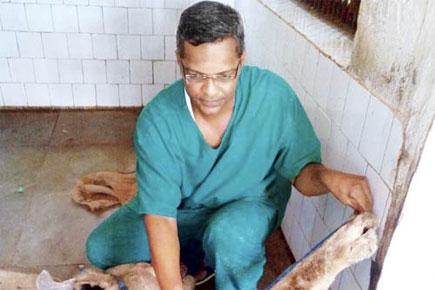
Shobha, a 11-year-old lioness at Sanjay Gandhi National Park (SGNP) died on October 14 (Tuesday) night. Her spirit will live on, thanks to taxidermist Dr Santosh Gaikwad. Incidentally, Shobha is the tenth big cat, which Dr Gaikwad will stuff.
ADVERTISEMENT
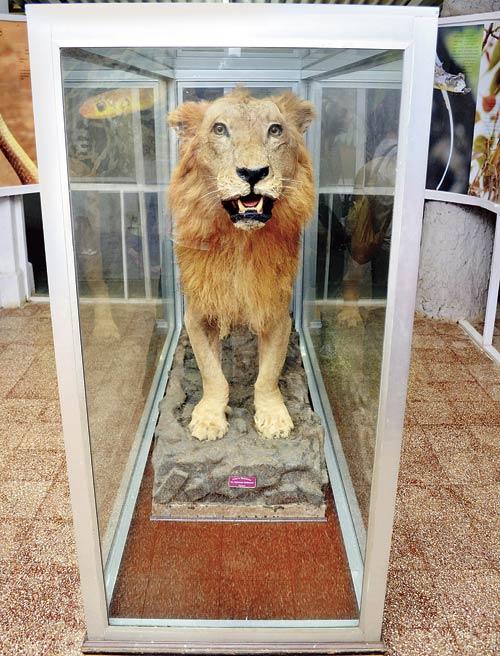
A lion restored to its former ferocious self. Pics/Abhishek Rane
Taxidermy is the art of stuffing and preserving a dead animal or bird. It received huge visibility in 2012, when a peacock from the Raj Bhavan garden was preserved.
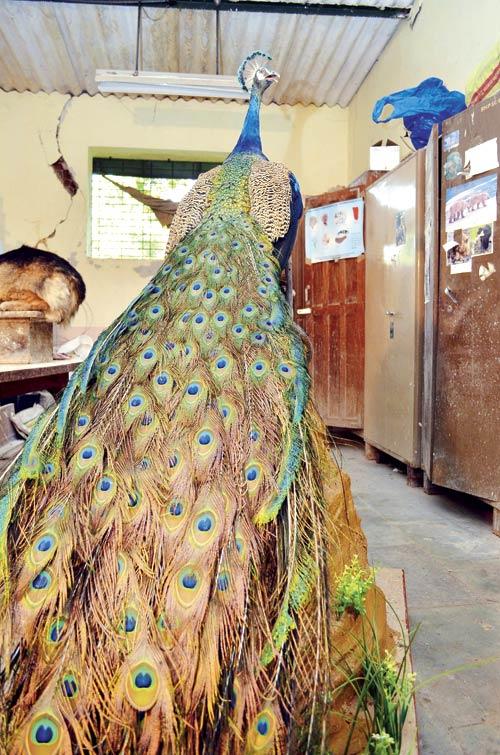
Another Raj Bhavan peacock has been restored
The man behind the project, Dr Gaikwad has been practicing the art of taxidermy since 2003. About Shobha, Gaikwad says, “Vikas Gupta, the director and chief conservator of forest at SGNP requested that the animal be preserved. I have skinned the carcass and taken measurements.”
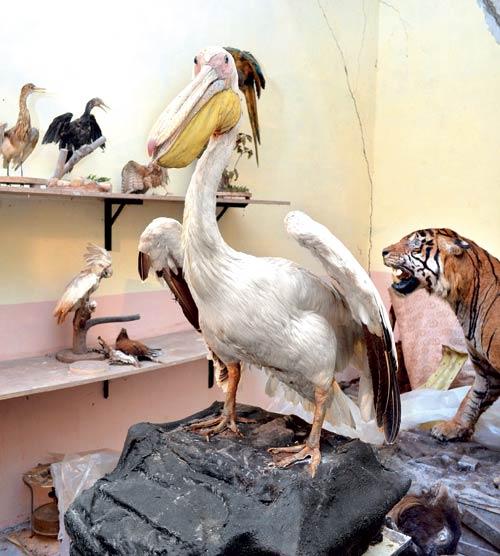
Rare birds have been preserved at SGNP Taxidermy Centre
Nainital’s best
Gaikwad, who is a professor of anatomy at the Bombay Veterinary College, has helped Pt. G B Pant High Altitude Zoo in Nainital to preserve two of their iconic animals Kunal, the zoo’s last Siberian Tiger in 2008 and Rani, a Snow Leopard in 2010.
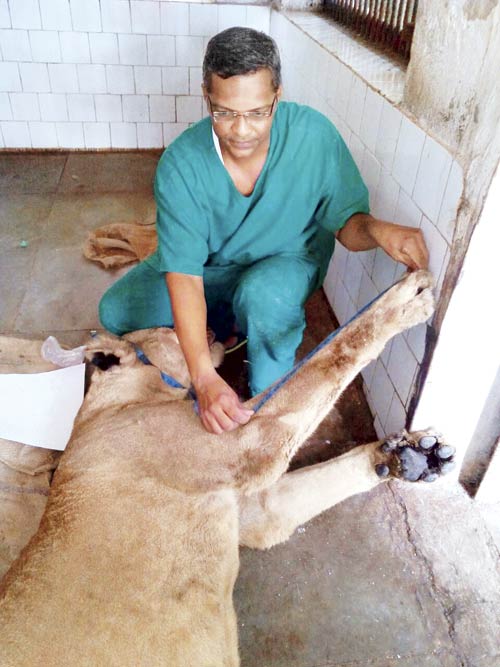
Shobha, the lioness being prepared for skinning by Dr Santosh Gaikwad
In accordance with the Central Zoo Authority (CZA) order in 2008 that every zoo in the country should have an Interpretation Centre, the Nainital Zoo is preserving animals by taxidermy. Two Golden Phesants, a Mountain Brown Owl and a Himalayan Black Bear cub have been sent to Dr Gaikwad to preserve.
Ready recently
Dr Gaikwad just completed preserving Raj Bhavan’s second peacock. He says, “The peacocks are an integral part of the Governor’s house and whatever he does is an example for the people. I do taxidermy work for free for him. However, when it comes to pets, I charge according to the cost of raw materials.”
The state government pays for the preservation of animals of SGNP as well as Jijamata Udyan, Mumbai’s Zoo. “I charge Rs 15,000 for a dog, Rs 12,000 for a cat, Rs 8,000 for big birds, Rs 5,000 for small birds, Rs 3,000 for big fish and Rs 1,000 for small fish.
People associate a soul with cats and dogs and so I get less of them for preservation. I get many exotic birds and fish,” explains Gaikwad. Recently, the Indian Army Artillery Centre in Nashik sent a mule for taxidermy as they want the animal to be kept in the centre for study.
“In mountainous regions, ration and spare parts are loaded on mules and taken to the posts. The army wants to use the preserved mule as a specimen to teach new recruits how to tie equipment correctly and in the right places,” says Gaikwad.
“I also worked on a pet dog from the city. It took me 21 days to complete the taxidermy process. The family was in tears when they saw their stuffed dog. Pet food as well as luxury diet makes the bodies of pets have excess fat and so performing taxidermy is tough,” explains Gaikwad.
Set to go
Jijamata Udyan has also sent a few animals for taxidermy over the years. “Deepak, the leopard in 2008; Mangal, the bear in 2010; a Ghariyal in 2009, an elephant head in 2011, a Rosy pelican in 2013 were preserved by me.
All these are at SNGP Taxidermy Centre. When the zoo is renovated, the Interpretation Centre will be opened and all these animals will be shifted there,” says an enthusiastic Gaikwad.
After taxidermy, an animal specimen can be kept for 70-80 years. If kept in an airtight glass case, the specimen can be kept for 100 years.
Work so far
He says, “I am still a student of the art. I keep comparing my work trying to make improvements. Observation of nature, passion and the ability to use a surgical blade to dissect the specimen are all pluses for those seeking to become taxidermists.
I have conducted workshops on taxidermy to explain the benefits of the process. Awareness of animal preservation is lacking in India. One day, these specimens will keep extinct animals alive in the public mind,” ends Gaikwad.
With Shobha now added to his long list of preserved animals Gaikwad will touch 650. But like that regal lioness would say, ‘Roar, are you keeping score?’
 Subscribe today by clicking the link and stay updated with the latest news!" Click here!
Subscribe today by clicking the link and stay updated with the latest news!" Click here!






